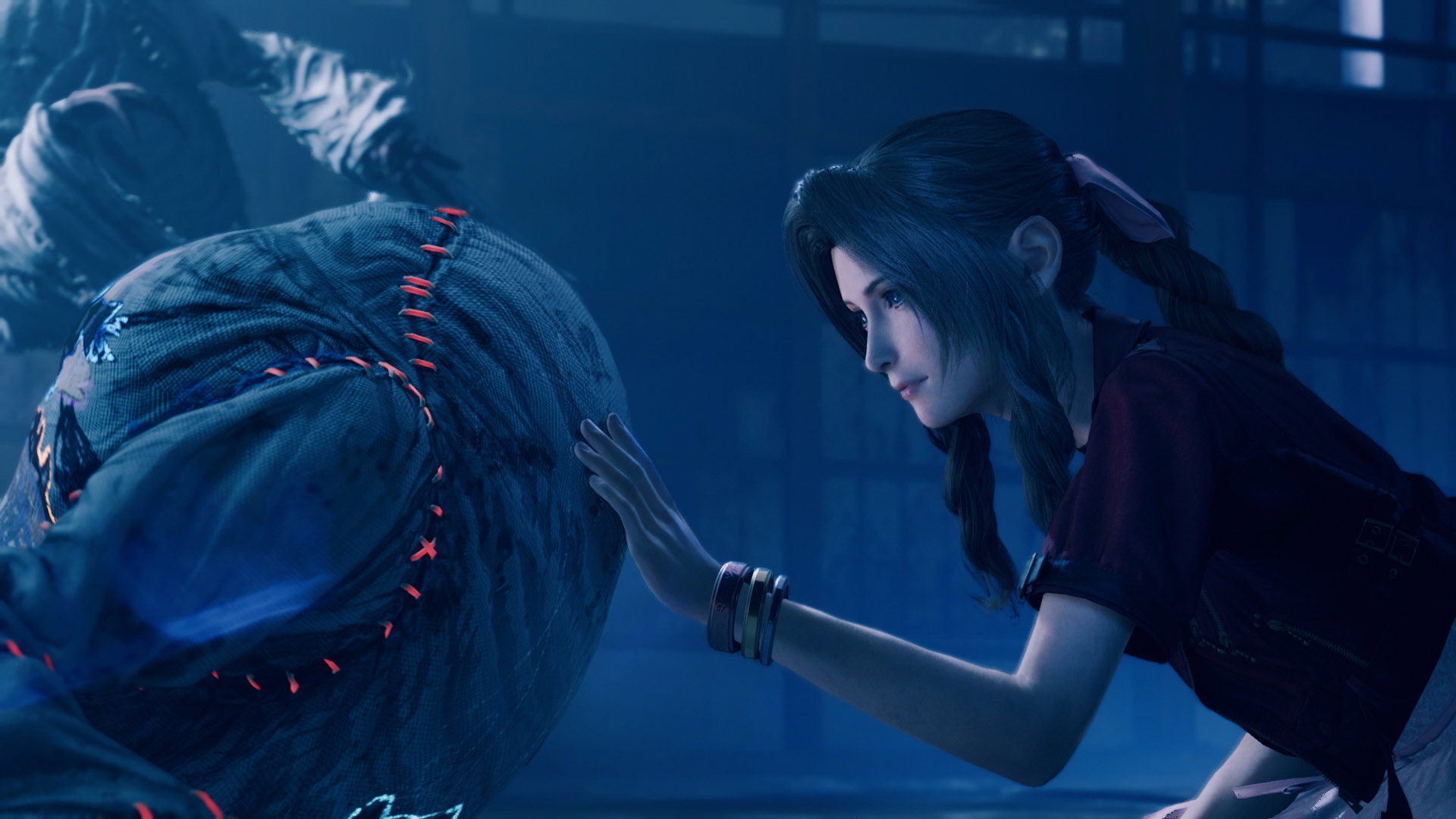In 1995, Hideaki Anno and Gainax began airing the anime series Neon Genesis Evangelion on TV Tokyo. The series was incredibly influential and marked a watershed moment in the anime industry, spawning countless spin-offs and a full-length feature film. It was also a product of both its time and its creative environment, with major aspects of its story being influenced by the personal struggles of its creator. As a result, Evangelion is equal parts a beloved pop culture phenomenon and a uniquely personal magnum opus that could have only come to fruition under incredibly specific circumstances. Over a decade later, the first installment of a remake film series, known as Rebuild of Evangelion, was released. Evangelion 1.0: You Are (Not) Alone was, for the most part, a slavishly faithful recreation of the beginning portion of the original TV show with much higher production values: everything a nostalgic Evangelion fan could have ever wanted. Until the very end of the film, wherein a major character who originally didn’t enter the story until much later shows up and seems to be aware of the original show’s events. Rebuild of Evangelion, as it turns out, is more of a quasi-sequel than a one-to-one remake, reimagining the iconic story of the classic series for a modern audience and taking the narrative in bold, unexpected directions.
And if you’re reading this wondering, “wait, hold on, I thought this was an article about Final Fantasy VII Remake,” you’re right. I’m getting there. But first…
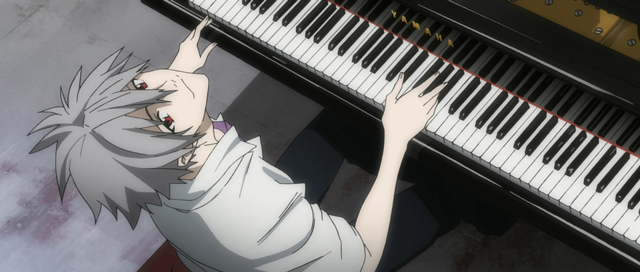
Diegetic vs. Non-Diegetic Storytelling
I have to throw out some definitions before we dive into the ending of Final Fantasy VII Remake. Specifically, I want to clarify what it means to talk about the “diegesis” of a story. If you’re familiar with the videos of Dan Olson, you’re probably already familiar with the concept, but to recap: the diegesis of a story is simply the narrative as presented explicitly within the text of a work itself. Luke Skywalker joining the Rebellion, taking up his father’s lightsaber, and flying his X-wing through the Death Star trench, for example, all occur on-screen in the film Star Wars, and they are therefore diegetic, or intradiegetic, parts of the story. Anything that is not explicitly an in-universe part of the text, then, is non-diegetic, or extradiegetic. Something as simple as the movie’s score, which certainly isn’t playing on a speaker in Luke’s cockpit but is something only the audience is aware of, is an example of a non-diegetic element. (The sole exception to this seems to be that one bit in Solo where the “Imperial March” plays over a loudspeaker, implying that John Williams somehow exists in-universe and works for the Empire. Still scratching my head over that one.)
One of the reasons I find Evangelion, and now Final Fantasy VII Remake, to be so fascinating is that they both combine the diegetic and the non-diegetic in their metanarrative. They are, in effect, companion pieces to their original counterparts, examining in broad strokes the cultural impact these stories had and ruminating on the nature of fandom itself. They are, for lack of a better term, “meta.” As an example of this, Evangelion creator Hideaki Anno quite famously struggled with depression throughout the production of the series, and as a result, the controversial final two episodes of the show literally break down the medium of animation, speaking directly to the audience and imploring them to “take care of themselves.” Diegetically, this is meant to represent Shinji’s breakdown as a result of the Human Instrumentality Project, but at this point, the show is more concerned about delivering its message to the audience: it has shattered the proverbial “fourth wall,” where the diegesis of the work has encroached on our reality in much the same way as a stage actor would address the audience in attendance. While history has been kinder to the Evangelion finale in retrospect, the series’ fans were incensed upon its release: so much so, in fact, that the theatrical film The End of Evangelion (a dark and gaudy retelling of the series finale that showed what the Instrumentality process actually looked like) literally included frames of the hate mail Anno received after the show finished airing. The End may have been advertised as the conclusion fans had been waiting for, but it attempted to have its cake and eat it too, delivering a scathing critique of the fandom that could only work in a series with a metanarrative like Evangelion. At the end of the day, Evangelion remains a show about troubled teenagers piloting giant robots, but watching the series while being aware of the author’s personal struggles makes it a much more enriching, fulfilling, and thematically resonant experience.
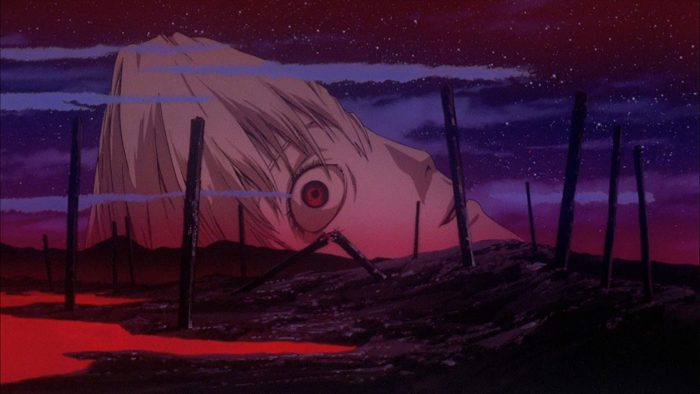
With all of that out of the way, let us move on to…
Final Fantasy VII and the Whispers of Expectation
In 1997, Squaresoft released the JRPG Final Fantasy VII on Sony’s PlayStation. The game was incredibly influential and marked a watershed moment in the video game industry, spawning countless spin-offs and a full-length feature film. It was also a product of both its time and its creative environment, with major aspects of its story being influenced by the personal struggles of its creators. As a result, Final Fantasy VII is equal parts a beloved pop culture phenomenon and a uniquely personal magnum opus that could have only come to fruition under incredibly specific circumstances. Over a decade later, the first installment of a remake series, known as Final Fantasy VII Remake, has been released. Final Fantasy VII Remake is, for the most part, a slavishly faithful recreation of the beginning portion of the original game with much higher production values: everything a nostalgic Final Fantasy fan could have ever wanted. Until the very end of the game, wherein a major character who originally didn’t enter the story until much later shows up and seems to be aware of the original game’s events, aaaaaand you see where I’m going with this now. The parallels between Final Fantasy VII and Neon Genesis Evangelion are really quite striking, both in terms of their influence on popular culture and how self-referential their remakes turned out to be.
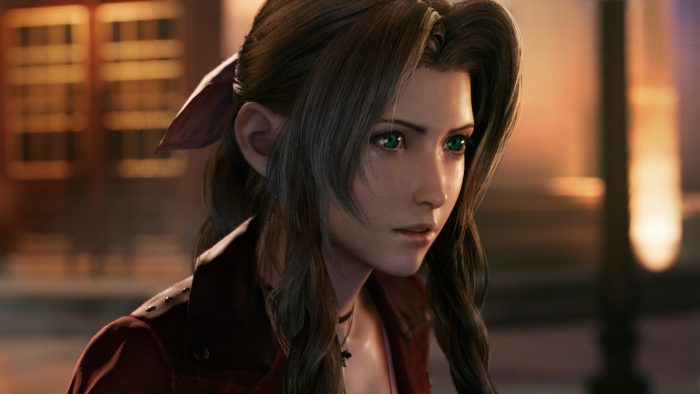
The ending of Remake has proven to be controversial, however, and it is indeed a pretty massive pill to swallow even if you appreciate it on a conceptual level. After a more or less faithful and relatively grounded (for a Final Fantasy game) retelling of the first few hours of Final Fantasy VII, right as the party is about to leave Midgar behind, they are instead confronted by the villainous Sephiroth and find themselves battling Fate itself. That’s not a metaphor or anything: the final boss of Remake is a giant monster representing the literal concept of fate made manifest, and by defeating it, the party basically has the opportunity to rewrite canon as they see fit. At this moment, the boundaries separating the game world and our foreknowledge of the original game’s events become blurred, and Final Fantasy VII Remake becomes a commentary on the very nature of what it is to remake something. This ending sequence is also a massive shift in tone and style from the rest of the game, so it’s no surprise that many players found it jarring.
Let’s back up for a second, though, because Remake actually does some pretty interesting foreshadowing prior to this twist. Throughout their journey, Cloud and company encounter the Whispers, ghostly robed apparitions that either help or hinder the party whenever things are about to get…different from the original game’s script. Cloud might not go on the Mako Reactor 5 bombing mission? The Whispers injure Jessie to ensure that he does. Did an unexpected diversion take you to a place that reminds Cloud of his tragic past a little too early? The Whispers show up to shoo him away. At one point, Barret is stabbed to death by Sephiroth, and the Whispers bring him back to life because it isn’t his time yet. When Red XIII is first introduced, he describes the Whispers as “arbiters of fate,” whose job is to ensure that events play out as they are meant to: in other words, as fans of the original FFVII remember them. Throughout the game, Cloud even experiences brief glimpses of the future, such as in the beginning of Chapter 9 when Aerith is walking away from him: the game hard cuts to that scene (you know the one), and tears roll down Cloud’s face. The implication is that the events of Final Fantasy VII have happened before and will happen again, unless the party does something drastic like…I don’t know, kill the literal embodiment of fate. Non- diagetically, the Whispers are the enforcers of canon, the expectations of the audience trying to impose their will on the storytellers. By doing this, Square Enix has effectively retaken ownership of the game’s narrative and given themselves carte blanche to do whatever they want with it: a prospect that is both tantalizing and terrifying for fans. Our foreknowledge of events no longer applies. Whether you think the ending is “good” or not, it’s certainly…bold.
Needless to say, the decision to include so many radical changes at the tail end of the game opens up a lot of questions, but I’m going to do my best to answer them. Bear in mind that this is by no means a definitive analysis, but rather speculation based on what was included in the game, the Compilation of Final Fantasy VII, and some choice quotes from the developers that have surfaced since launch. So without further ado, let’s dive into some of the weirder moments from the ending and discuss what they could mean for the future of the Remake project.
Okay, so exactly how many Sephiroths are there in Remake?

The answer, as it turns out, is four. According to the recently released Ultimania book, which is being helpfully translated into English by user @aitaikimochi on Twitter, the Sephiroth the party encounters for the final battle and in the ending cutscenes is an “Unknown” Sephiroth we’ve never seen before. The other three more or less line up with what we saw in the original FFVII: the ones that physically interact with Cloud and the party are the black-robed Jenova proxies from the original game, while the others are either flashbacks to Cloud’s past or an illusion that only Cloud can see due to his trauma.
So…who is this Unknown Sephiroth, and what is his deal? He explicitly goads the party into killing the arbiters of fate and fights them as part of the final boss battle. Is he trying to change the course of history so he can win? Some fans have posited that the Sephiroth that appears in the last cutscene is actually a “good” Sephiroth, or pre-Crisis Core Sephiroth, who legitimately wants Cloud to join him and change history by way of atonement. Whether or not this holds any water…well, we’ll see!
Is this some kind of stable time loop or reincarnation thing?
There’s one line from Advent Children that stood out in my mind while I was playing Remake. It’s when Rufus Shinra talks about the Lifestream’s cycle of life and death as being “the very truth of life,” and that “history, too, will inevitably repeat itself.” He continues his speech with the following: “So go on; bring your Jenovas and your Sephiroths. It won’t matter. We’ll do as life dictates and stop you every single time.” In Advent Children Complete, this line was changed like so: “We will do as life mandates. We promise, we won’t let you win, we’ll stop you.” It’s slightly less impactful but gets the message across. Either way, the idea of souls from the Lifestream being reborn is an interesting one. We know that at the end of FFVII, humanity eventually goes extinct but the planet lives on. Could Remake take place centuries later, so much so that Red XIII’s visions of the future are actually memories of the past?

On a similar note…
What is Aerith’s deal?
Hoo boy, Aerith. There’s a bit to unpack here. Aerith’s tragic death in the original game is what ultimately allows the planet to survive Meteorfall. At the game’s climax, when Sephiroth is defeated but Meteor is about to hit the surface, Aerith is able to cast Holy from within the Lifestream, stopping Meteor and (presumably) allowing humanity to survive long enough for the Compilation to take place. In the Compilation, in fact, both Aerith and Sephiroth’s consciousnesses are “coursing through the Lifestream,” with both characters able to influence and communicate with the outside world. Sephiroth’s corruption manifests as the deadly Geostigma disease and his three Remnants, while Aerith’s presence is felt through her flowers and the rain reminiscent of her final Limit Break.
In the remake, Aerith speaks to the flowers in her garden and is aware of information from later on in the story. She recognizes Sephiroth in the last chapter, and she knows all about the Whispers and that fate will change if they are defeated. As she looks up at the sky outside Midgar at the end of the game, a soft rain begins to fall, with lighting very similar to the ending scene from the movie. So does this Aerith retain memories of her past self? Or is the original Aerith still in the Lifestream, influencing events from afar? The visual references to the Compilation seem to imply as much, but it’s hard to say at this time.
Also, did anyone besides me notice Cloud grasping his left arm when Sephiroth appeared in Hojo’s lab? The same arm that was infected with Geostigma in Advent Children? It’s not the same injury as the Nibelheim incident, where Cloud was stabbed in the shoulder. Is Sephiroth also still in the Lifestream, seeking vengeance? Food for thought.
Who were those three Arbiters in the last battle?
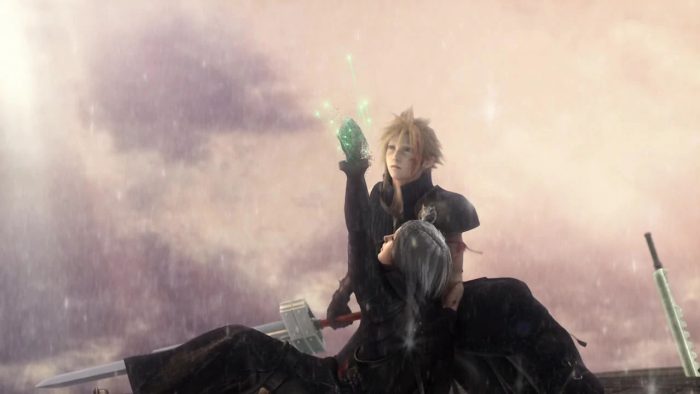
During the final battle against the Whisper Harbinger, the player has to contend with three smaller enemies. These color-coded entities are known as Whisper Rubrum, Whisper Viridi, and Whisper Croceo. They each fight with distinct weapons (swords, gauntlets, and guns), and the trio eventually combine into a Whisper version of Bahamut. Their enemy intel describes them as “entities from a future timeline that have manifested in the present day,” and that they “fight to protect the future that gave shape to it.”
The obvious conclusion many have come to is that these three Whispers are representations of Cloud, Tifa, and Barret. It’s a three-man party of characters who fight with swords, fists, and firearms, and the future that the Whispers are protecting does end in victory for the planet, even if it is eventually a pyrrhic one for humanity. One of the wilder fan theories floating around is that these three are actually Kadaj, Loz, and Yazoo, the Remnants of Sephiroth from Advent Children. Croceo dual wields guns in a manner similar to Yazoo’s twin gunblades and even has an attack called “Velvet Nightmare,” which is the name of those weapons. Additionally, Kadaj was able to summon a twisted version of Bahamut in the movie, and the three Whispers do the same thing. The Ultimania seems to lend some credence to this theory, or at least it confirms that the references to the Remnants are intentional. Are Kadaj, Loz, and Yazoo fighting to preserve their own existence?
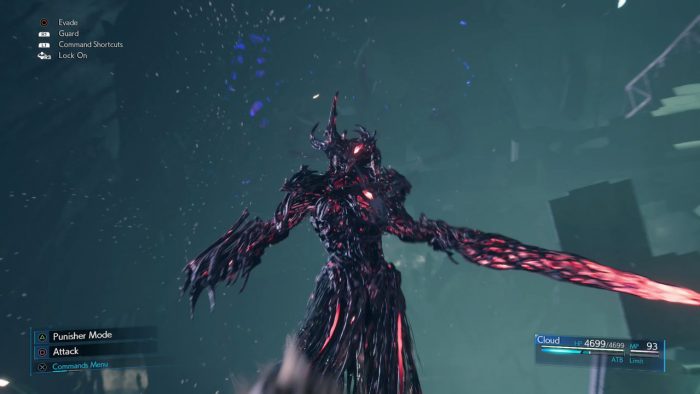
On an unrelated note, the big final boss monster is called the Whisper Harbinger. You know what else is explicitly referred to as a “harbinger” in the Compilation? Jenova, whom Vincent refers to as “heaven’s dark harbinger.” Could this mean that the Whispers are malevolent in nature or somehow have been corrupted by Jenova in the same way Sephiroth was?
Is Zack alive?
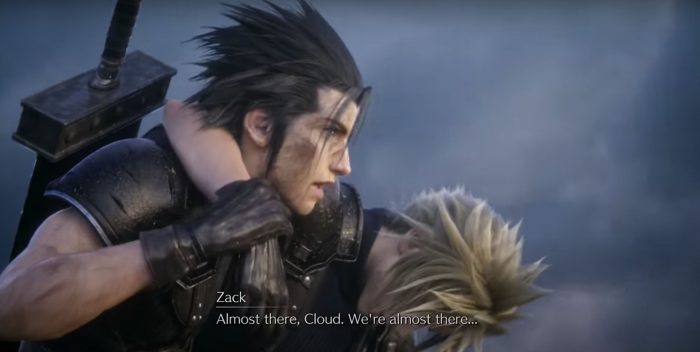
This is another huge can of worms opened up by Cloud and company defeating the Whispers. Before the final battle, we see none other than Zack Fair getting ready to fight against a horde of Shinra troops on the outskirts of Midgar. Fans of Crisis Core and the original game will remember this moment as the battle that ends in Zack’s death, where he passes along his Buster Sword to Cloud. Cloud then proceeds to suffer a mental breakdown and adopts Zack’s persona as his own, only recovering his real identity in the last chunk of the game. It’s one of the major plot twists in the original FFVII, made all the more painful because Zack is just so darn likable in Crisis Core and his death feels like a genuine loss. It’s a loss Cloud is still struggling with in Advent Children, where he leaves the Buster Sword as a grave marker.
Once the Whispers are defeated in Remake, however, we see a scene of Zack surviving his final showdown. He’s even surprised about it and comments that he “thought there were more of them.” He picks up the wounded Cloud and staggers on to Midgar, and during the game’s ending scenes, we see the past Cloud and newly alive Zack seemingly cross paths with present-day Cloud and Aerith, although the two groups are unaware of each other. This obviously has huge ramifications for the future of the story: how can Cloud have taken on Zack’s personality, memories, and weapon if Zack is still alive?
Well, it seems as though this takes place in an alternate timeline of sorts, showing the dramatic impact killing the Whispers has on the fate of these characters. Before the final battle, the party steps through a portal and walks into an identical Midgar, implying a parallel reality. We also later see an image of the canine Shinra mascot Stamp blow past the still alive Zack, but the breed of dog is different. According to the developers, the two Clouds cannot exist in the same time and space, and Cloud shouldn’t have his sword if Zack is alive: again, this seemingly confirms the existence of another timeline. The Ultimania book even states that Zack “went missing” five years ago, says nothing about his death, and refers to him in both past and present tense. Did J.J. Abrams direct this game or something?
I have no idea what this could all mean for the next installment. Maybe one timeline will more closely follow the events of FFVII while the threads of fate are severed in the other. Will Zack and Cloud cross paths again? Maybe Zack will join the party when Cloud is undergoing his mental break later on? There are definitely some intriguing possibilities.
What is Project G? Or Project S? What about Deepground?
In Final Fantasy VII Remake, the player eventually visits an underground testing facility where Shinra is performing human experimentation. While never explicitly referred to as such in-game, this facility is labeled Deepground by the Ultimania book, which also mentions that its existence is top secret even within Shinra. So…what’s up with that?
Deepground first appears in Dirge of Cerberus as a military organization that had been trapped beneath Shinra HQ in the aftermath of Meteorfall. Members of Deepground were effectively imprisoned, brainwashed, and experimented on in underground jails with the aim of creating beings that could surpass SOLDIER. The most high-profile members of Deepground are the Tsviets: Weiss the Immaculate, Nero the Sable, Rosso the Crimson, and others who were created as a part of Project G. Whether or not any of this will be relevant to Remake‘s plot is anyone’s guess, but players do battle against quite a few humanoid monstrosities in this underground segment of the game.
Projects G and S are referenced in the remake by Hojo as he muses about his experiments. These are the different branches of the Jenova Project, where Jenova’s cells were injected into human subjects to give them inhuman abilities. Project S, overseen by Hojo, led to the creation of Sephiroth, while Project G led to the creation of Zack’s mentor Angeal and the antagonistic Genesis, both of whom play a pivotal role in Crisis Core. After his defeat at Zack’s hands, Genesis is picked up by Weiss and Nero, who try to induct him into Deepground. Genesis is an odd idiosyncrasy in the Compilation because his design is based off of real-world musician Gackt, and Square Enix seems to have lost the rights to his likeness now, so whether or not they can do anything with Genesis at this point is up in the air.
Still, assuming they get the legal rights all sorted out, could Square Enix be planning to pick up where Dirge of Cerberus left off? That game’s secret ending shows Genesis flying away with Weiss’ body, ominously stating that the pair “have much work to do.” Are we seriously about to see the resolution to a decades-old cliffhanger in Remake? Who knows.
What if it was all a dream?
Okay, so this is less of a theory and more a personal fear of mine, but before Chapter 18 and the battle against Sephiroth and the Whispers, the party encounters a form of Jenova in President Shinra’s office. This entity is called Jenova Dreamweaver, and its enemy description says that it has the ability to project false images and illusions onto its victims. The fight against Dreamweaver takes place in a separate arena, and it’s one of the only bosses in the game to do so.
I don’t think this is likely, but if Square Enix really wanted to, and the backlash to the changes made in the remake was strong enough, they could easily have the next installment handwave away the controversial ending with a “it was all a dream caused by Jenova” disclaimer. Call it the Star Wars: The Rise of Skywalker approach. Sure, it’s intellectually dishonest, cowardly storytelling, and probably won’t wind up making anybody happy in the long run, but the possibility is there. I really, really hope they don’t go that route, but you know. Just in case. I’m hedging my bets!
In conclusion
I’ve just spent the better part of 4000 words discussing the myriad ways in which Final Fantasy VII Remake draws upon the legacy of its past while also turning to a blank page for its future. But at the end of the day, I know as little as anyone else about the direction they could be taking this project. And honestly, that’s what’s exciting! I’m looking forward to seeing whether or not any of these theories wind up paying off in the long run, or if Tetsuya Nomura and his team manage to surprise us even further.
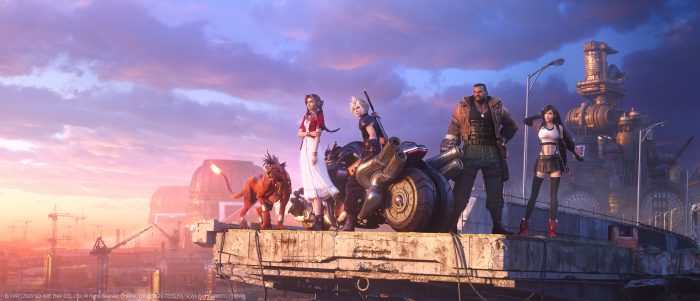
I understand why many fans are concerned, and that no matter how excited I may be for the possibilities the future holds, the ending of the remake is still a huge shift in direction from the rest of the game. Until the full scope of the project is realized, we really can’t be certain how these risks are going to play out. Just like with Evangelion in the ’90s, if the ending didn’t work for you, that’s still perfectly valid. But as the credits began rolling and I reflected on the journey to come, the words from Final Fantasy VII Remake‘s E3 2015 announcement trailer came flooding back to me, and I think it’s something we should consider as we begin the long wait for the next installment…
“The Reunion at hand may bring joy. It may bring fear. But let us embrace whatever it brings…for they are coming back.”

